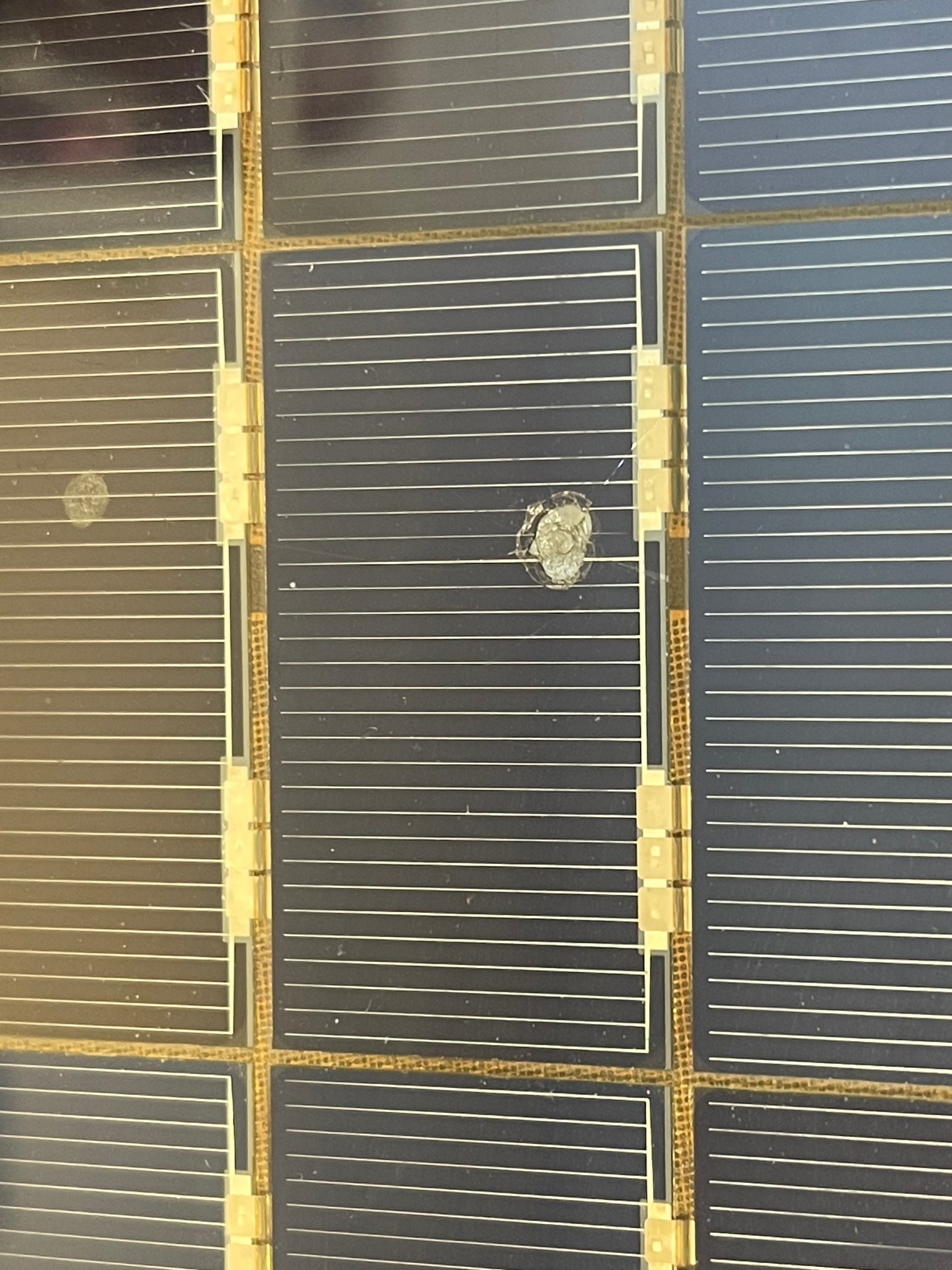Canterbury Cathedral is one of the oldest and most famous Christian buildings in England. It’s the site of the assassination of archbishop Thomas Becket and the destination of the pilgrims in Geoffrey Chaucer’s Canterbury Tales. A pair of scientists saw something extra about this historic building. It has a large old roof – the perfect hunting place for cosmic dust.
Dr Penny Wozniakiewicz and Dr Matthias van Ginneken study micrometeorites, the smallest fragments of cosmic dust that make their way from space to Earth. Studying this material helps us understand both what the Solar System is like around our planet and also far beyond it.
“I’m really interested in learning more about how much dust is arriving at Earth. I actually look at dust both in space and on the Earth’s surface,” Dr Wozniakiewicz, from the University of Kent, told IFLScience.
“We study the surfaces of these spacecraft and you’ll find that they have little pits all over them and they’re formed by impacting particles – dust grains that are coming in, and they’re coming in at really high speeds, and they basically make these impact craters over the surfaces of spacecraft. A really good example would be solar cells from the Hubble Space Telescope. They’ve been brought back twice now, and they’ve been searched for these impacts on them.”
Between 20,000 and 40,000 tons of cosmic dust arrive at our planet, but not all of this can make it to the surface. A lot of it burns in the atmosphere. A few bits make it through unscathed, and some others are melted and turned into tiny little spheres. In these spherules, there are cosmic compounds that might reveal where they originated.

The literal impact of tiny and less tiny micrometeorites is clearly visible on this portion of solar cells that used to fly on the Hubble Space Telescope.
Image courtesy of Dr Penelope Wozniakiewicz
“Most of my work has been looking for the parent bodies of cosmic dust, basically where this dust comes from in space,” Dr van Ginneken explained to IFLScience. “We think that the vast majority of these micrometeorites come from asteroids. Each impact between asteroids likely produces a gigantic amount of dust. And this dust, due to processes like the effect of solar rays, will lose momentum and will start spiraling towards the Sun. Some of this dust will cross the orbit of the Earth and end up as micrometeorites. But we don’t know exactly the link between cosmic dust, meteorites, and asteroids.”
To answer all the unknowns about cosmic dust, like how much survives the atmosphere and where it comes from, scientists need to find samples. Unfortunately, micrometeorites are not bright neon colors, and don’t have a sign that says “here I am”. Once researchers get the dust, they sift through the stuff from human or terrestrial activity and then find a few samples of micrometeorites. You need a lot of dust to find a significant sample. And so the team quite literally looked at Canterbury Cathedral.
“Ideally you need a large roof and you need an old roof, because the older the more time it had to accumulate material from space, so the more likely you are to find micrometeorites,” Dr van Ginneken explained to IFLScience.
“I can see the cathedral from my flat. I just saw the cathedral and I said: this is perfect because the roof is indeed gigantic, potentially old, although the one we sampled is not that old. But there are still roofs that are 120 years old on this cathedral, so it’s good. And then there is this whole aspect that it’s an iconic building, so there is kind of a poetry to it.”
First armed with a dustpan and brush, and afterwards with a battery-powered vacuum cleaner, the intrepid team collected dust that had accumulated on the cathedral’s roof. The dust was then cleaned and searched in particular for the spherules – the melted micrometeorites – and stuff with magnetite in it, as these are most likely from space. The researchers tell us that there is some pretty cool stuff in terrestrial dust too. However, that is not the focus.
“It’s a case of looking for spheres and looking at the magnetic particles to try and increase our chances of finding extraterrestrial dust,” Dr Wozniakiewicz explained.
Dr van Ginneken also went to Antarctica to collect cosmic dust. Thanks to the continent’s isolation, it is possible to find a lot of it. But it is also dangerous and expensive, so the team will continue to focus on cathedrals in the United Kingdom. They are planning an expedition to the nearby Rochester Cathedral, and they are working on the logistics for 13 more.
From now on, when you see the high-pointed arched vaults and the flying buttresses, you can think that ancient architects created not only spectacular buildings, but great receptacles for cosmic dust.
Source Link: Scientists Are Hunting For Cosmic Dust On The Roof Of Canterbury Cathedral